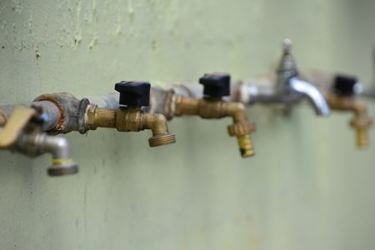Old Lead-Infested Water Pipelines Are Being Replaced At A Rapid Pace Throughout America


The Environmental Protection Agency (EPA) recently announced that $3 billion funding is available to replace old water distribution pipelines to ensure safe public drinking water throughout the U.S.
Congress allocated the revenue to protect citizens from the harmful effects of lead-infested water on public health. Lead contaminants are all too common when pipelines are old and nearing their anticipated lifespan. Even a small amount of lead can negatively impact brain development in children, and repeated small doses of lead are dangerous to individuals of any age.
The funding currently available through the EPA's Drinking Water State Revolving Fund was made possible by the Bipartisan Infrastructure Law. The program mandates that the funding be sent to state officials, who are then required to pass it on to local officials at the city and county levels of government. Cities around the world are replacing lead-infested water pipes to ensure that their citizens have access to clean and safe water. Even before federal funding became available and mandates were issued, many cities took the initiative to address aging pipeline issues and the dangers associated with lead contamination.
Health concerns related to lead have been evident for quite some time. According to a recent survey, about 9 million lead water pipelines in the U.S. must be replaced. The law allocated $15 billion to replace these old water distribution pipelines and that funding will continue to be available over the next several years. Funding is made available to states based on the number of lead service lines needed to be replaced, priority timelines, and more. Government officials in high-priority areas are encouraged to act quickly to remove and replace old water distribution pipelines.
Although the data is controversial, one recent survey lists Florida as the state with the highest number of contaminated water pipelines. Illinois, Ohio, Pennsylvania, Illinois, and Texas trail close behind though when it comes to critical water concerns.
The state of Florida received $229 million for water pipe replacement projects recently. Although Florida and Illinois have been charged with having similar per capita numbers of lead pipes, a dispute has been noted. The city of Tampa will present the findings of its survey of lead-contaminated pipelines that need replacement to the EPA in October of this year, and the outcome of that review will determine how city leaders proceed with replacement projects.
In January, the city of Galena, Illinois, received the maximum grant amount allowed to replace between 300 and 400 lead service lines in the city. Lead pipe replacement efforts are underway, but more funding will be needed to complete the entire project. Officials report immediate needs in adjoining regions, a common occurrence among numerous states. The federal funding will need to be consolidated with other revenue.
The city of Brookfield, Illinois, will begin the second phase of a lead pipe replacement project in 2024, and a third phase will follow in 2025. Together, the two phases will cost about $20 million.
The state of Ohio received about $184 million for water pipeline replacements. The city of Akron announced a new project this week. An RFP is expected shortly, and contractors will be selected to replace about 2000 lead service lines. City officials want to choose three contracting firms to each replace 500 water pipelines. The total cost of the contracts has been estimated at approximately $12.5 million. Work is scheduled to begin in August with a completion date scheduled for fall 2025. Akron will seek additional funding to award a final contract to replace the remaining 500 lead pipes.
Almost every city in the United States is currently struggling with water resources and safe drinking water. The EPA is responsible for ensuring that states, local authorities, and water suppliers enforce safe drinking water standards. As a result of mandates and available funding, thousands of clean water projects will be launched over the next few years. While 90 different contaminants are monitored for safe drinking water, lead contamination is one of the most highly regulated currently because of the significant danger to public health. Information about water safety in each state and each city is available online. A quick check on any city’s rankings related to current water purity infractions is also available online.
As President and CEO of Strategic Partnerships, Inc., Mary Scott Nabers has decades of experience working in the public-private sector. A well-recognized expert in the P3 and government contracting fields, she is often asked to share her industry insights with top publications and through professional speaking engagements.
